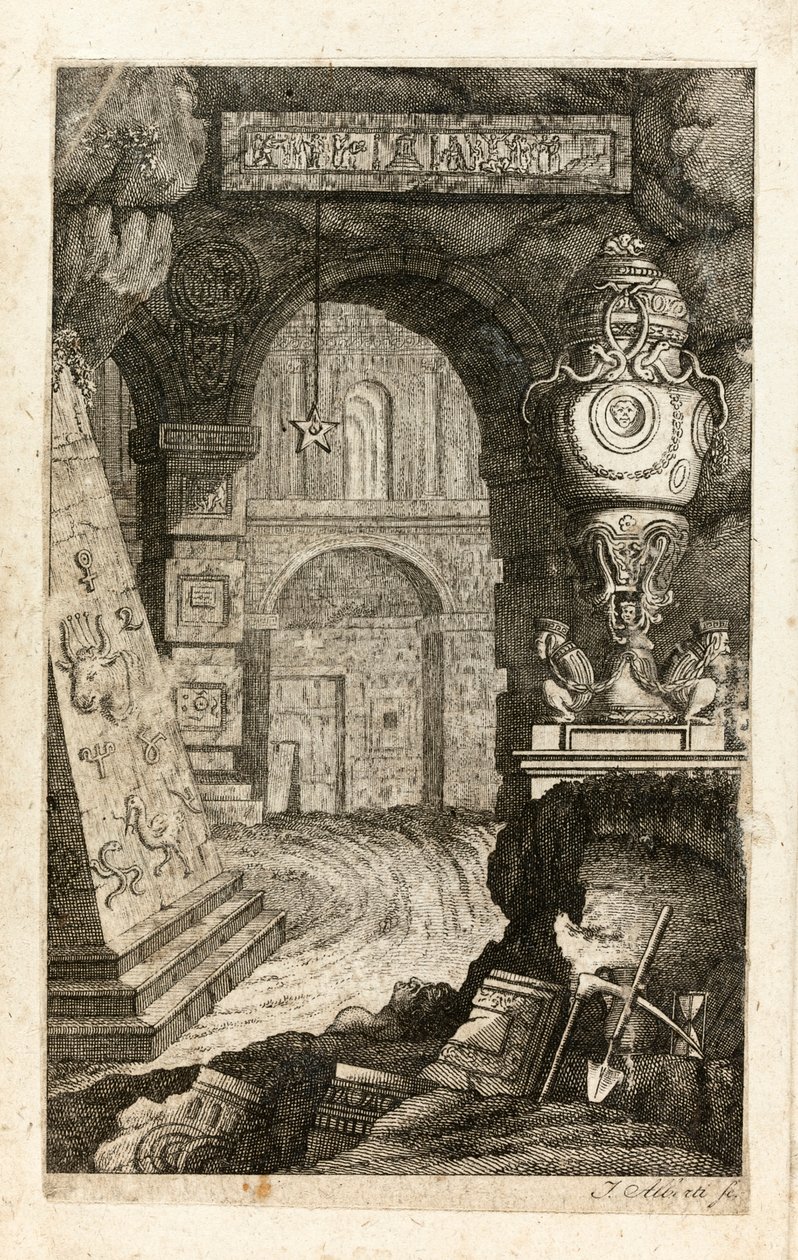Lesser and Greater Mysteries: Mozart’s The Magic Flute at the Nashville Opera
There’s a rousing musical clarity at the end of The Magic Flute’s first act that’s so at odds with the just-transpired turns of the plot and our main characters’ newfound place within them, it’s hard not feel a sense of vertigo. Moments before, we might have understood the nature of Tamino’s quest perfectly, at least to the extent that the rules of this dreamscape, littered as it is with magical instruments and singing bird men, is comprehensible in any normative sense. Now we’re not so sure.

And not just because of Mozart and Schikaneder’s complete inversion of the plot as we’ve been led to understand it up to this point. While perhaps disorienting in some extremely short-term sense, the switch from “Queen of the Night=Good, Sarastro=Bad” to the exact inverse is ultimately a fairly simple operation, and probably even one an astute observer could work out in advance.
No, what The Magic Flute does here, certainly in its vertiginous effect on a listener 220 odd years on, is something a bit more interesting than a simple plot twist. Like I said to begin with, that sense of disorientation comes from how resolute the music appears at this moment; how firmly the lowering curtain suggests a sense of closure, of narrative gravity, just as the events unfolding on stage are suddenly thrown into an all-encompassing flux.
Though Tamino has been our point of view thus far, the blessing he and Pamina receive from Sarastro marks a moment of rupture not simply accounted for by the re-orientation of the plot and its characters. Sarastro’s attendants in the chorus sing that “virtue and righteousness” (“Tugend und Gerechtigkeit”) have the power to make “the earth a paradise/And mortals to resemble gods.” (“dann ist die Erd’ ein Himmelreich/und die Sterbliche den Göttern gleich.”) Now, in light of the judgement of Sarastro, the “divinely wise” (“der göttliche Weise”), it is as if Tamino’s perspective is at a holy remove to us; as if he’s now a step closer to “Götter gleich” and beyond any simple 1:1 emotional identification.
This distance is one that’s never perfectly closed again, perhaps not even by the finale of Act II. Maybe this disconnect in part accounts for much of the ambivalence concerning The Magic Flute’s narrative. Even its devoted fans will occasionally point out that the story is “silly” or maybe even “contrived.” Something certainly feels a little inelegant in the way much of the fairy tale exposition of the first act is undone so quickly here, especially followed then by a second act where so little might seem to occur at all.
But I think all this is not so much a failure on Mozart/Schikaneder’s part, but is in fact, for better or for worse, the whole structural conceit. It’s as if the Act I Finale were a challenge to give up, to leave the work behind. “Cover their heads, then, for they must first be made pure!” Sarastro tells his attendants (“bedecket ihre Häupter dann /sie müssen erst gereinigt sein”). Here we’ve had our own heads covered, and the only options that remain to us are now either being ushered ahead through a series of tests on the path to enlightenment or being left behind to languish in the darkness.
But what does enlightenment mean here exactly? And why does it involve old men putting a bag on my head?
The usual answer to this line of questioning revolves around Freemasonry. In his notes for the Playbill, Nashville Opera’s CEO and Artistic Director, John Hoomes, describes the second act as “an allegory of Freemasonry…that has perplexed audiences ever since.” He’s quick to dismiss this element at the same time, however. “How important is it to our enjoyment of The Magic Flute that we understand all the Freemason symbolism of Act II? Not very much, actually. The Magic Flute works on so many different levels that an audience can take it as an intellectual feast for the mind, an emotional delight for the heart, or a winning combination of both.”
This isn’t an uncommon defense of The Magic Flute either. Musicologist David J. Buch, for example, has written a number of articles arguing that we should place a reduced importance on the Masonic rites of the second act in favor of reading The Magic Flute more firmly in a tradition of Märchenopern (Fairytale Operas). Like Hoomes, the concern for Buch over the “Masonic element” of The Magic Flute seems to hinge on the question of how an audience might receive it (or not, as the case may be).
“Many subscribe to the “Masonic-Ritual” interpretation of the story and its musical setting. This goes far beyond the recognition of Masonic references and presumes that a masterpiece has at its most profound level of meaning an arcane and elaborate initiation ritual, complete with numerological and symbolic hierarchies, whose code is to be deciphered by those initiates who can then derive pleasure from the recognition of the many hidden clues. For those of us who believe that great works of art appeal to deeply-felt human needs and experiences, these artificial and esoteric interpretations of the opera’s underlying meaning are unsatisfactory.”
While Hoomes’ program notes take care to leave open the possibility that the Masonic and fairytale elements might not only coexist, but reinforce one another, Buch, though he doesn’t fully reject them, seems suspect of any reading that places too much emphasis on the more “esoteric” aspects of the plot. Though Buch concedes in a footnote that even the frontispiece from the first printed libretto for The Magic Flute contained alchemical symbols as overt references to Freemasonry, he also maintains that the “Masonic Ritual theory” of the opera was not “fully evolved until the twentieth century,” as if the reading itself were some kind of recent imposition onto the work, and not a relatively straightforward extrapolation of its historical context, structure, and themes.

Buch argues, while relying largely on the work of the controversial psychiatrist Bruno Bettelheim, that the importance of fairy tales is in their ability to soothe and delight the minds of children, primarily in their reduction of the problems of the world to simple binaries. Whether or not you grant any merit to Bettelheim’s characterization of a child’s mind as simplistic, it’s decidedly troublesome once Buch starts applying this same state of mind to an eighteenth-century audience as a whole, for whom “it is likely that there was a greater prevalence of superstition in everyday life…” The Magic Flute, then, should be understood primarily as a Märchenoper, because the silliness and fantasy of its plot is meant to delight and impart simple truths to its simple audience.
There’s a kind of mild paranoia in Buch’s reading, as if he senses in the “Masonic Ritual theory” some kind of threat of withheld knowledge. It’s less that he wants to downplay the Masonic elements of The Magic Flute themselves, but rather he seems to be taking umbrage, probably rightfully, with the entire theory of esoteric knowledge Mozart and Schikaneder are offering, in which only an enlightened few are deemed worthy to pass from the realm of night into eternal day.
It’s notable that his argument focuses primarily on the libretto’s sources and not the work itself. I think this is in part because the second act can hardly be accounted for outside of the “Masonic Ritual theory,” largely because, again, the difference in the fairy tale first act and the solemn, ritualistic second act is not an error or oversight; it is a purposeful movement from one to the other. It is a movement, in Enlightenment terms, from the world of superstition, of “lesser mysteries,” into a world of reason and of truth, of “greater mysteries.” Buch’s argument here doesn’t so much refute the “Masonic Ritual theory” as reinforce it.
That said, I think Buch is right to be off put by this second act. Ultimately, he seems less concerned with any specific reading of The Magic Flute than he is with the broad question of how and, importantly, by and for whom the work should be read. His emphasis on the “esoteric” and on “hidden clues” in his critique evokes the same type of mystery cult he seems intent on reading out of The Magic Flute. This conflation of the opera’s text and the discourse surrounding it is more than a figurative rhetorical flourish, though. Here he demonstrates that The Magic Flute is not an “allegory,” at least not it any simplistic sense. It is a presentation, perhaps even a musicodramatic demonstration, of a very specific philosophy of knowledge and experience; one that necessitates a withholding of knowledge and a passage only of a select few into “truth.”
The consequences of our “reading” of the opera, then, even at a purely emotional level, is to make some kind of value judgement on the truthfulness of that philosophy of knowledge. The problem I think is that Buch doesn’t follow the implications of this far enough. He’s so preoccupied with the idea, rightly, that this withholding represents a form of elitism, that somehow the idea of the work’s own historical context becomes cause for paranoid suspicion—as something “hidden.” It has become, along this line of argument, a moral imperative only to “enjoy” the work, and never to “think” the work. We must be careful to approach the work only from the mindset of Bettelheim’s “children,” in order to avoid some elitism on our own part. Hence why he seems content to stay behind in the world of “lesser mysteries.”
But it is precisely this historical context which gives us the ability not just to pierce the veil of some elitist, “esoteric” reading, but importantly also to move past the equally-patronizing world of Bettelheim’s fairy tales for adult children. And not because it gives us some orderly, singular “Truth,” which was there all along for the wise to work out, but in fact the opposite, as we shall see.
Here we should turn to the Egyptologist Jan Assman’s work on the role Ancient Egypt played in the imagination of Enlightenment thinkers, including virtually all Freemasons at the end of the eighteenth century. Of particular relevance is the prominent thesis that held that the origins of monotheism amongst the ancient Israelites lay in the mystery cult practices of Ancient Egyptian religious rites, what Assmann refers to as “Jehova-Isis.” Moses was the agent of this transfer, and Mt. Sinai the place. In his childhood in the halls of pharaohs, the old argument goes, Moses learned the secrets of these rites, which were, despite the polytheism of day-to-day religious practice, in service of a cultic worship of a Great Singular God, usually represented by the figure of Isis.
At the risk of oversimplification, hieroglyphics, in their still-undeciphered state, were understood by many European thinkers from the sixteenth to the eighteenth century largely as an arcane holy script, not the writing of everyday language, but one often associated with the Hermetic tradition of alchemy; one whose very secrecy was necessary for the cultic priests of Ancient Egypt to carry out true worship of the true singular God.

of Die Zauberflöte by W.A. Mozart, 1791.
(Ignaz Albirti, Engraver)
It’s this dual understanding of Egyptian religious practice that gives us the sense of “lesser” and “greater mysteries.” This distinction refers to what was reconstructed, mistakenly, as a necessary separation of everyday religious practice by the rabble (polytheism) and true, divine worship of the One practiced by a mystery cult (monotheism). Hieroglyphics and the esoteric truths they both hid and revealed were the central mechanism of this separation. They were the veil that separated the unwashed masses from true enlightenment and behind which the mystery cult learned the Truth. This is why to Moses alone are the Laws of God imparted, and why they’re split into the eternal “moral” Law and the contingent “ritual” Law. By Mozart’s time, this idea had taken on a number of forms, and in the works of Schiller and Kant, received a particular nuance and focus that most obviously informs Mozart and Schikaneder’s understanding, to whatever extent, of this historical idea.
For Schiller, this singular God (Jehova-Isis) is neither literally the God of the Old Testament, nor the Egyptian goddess Isis, but rather, both, and more importantly, far more than both. Assmann is interested in what he calls “Cosmotheism,” a term he pulls from the French statesmen Guillaume-Chrétien de Lamoignon de Malesherbes, which refers broadly to a type of quasi-Spinozist philosophy/theology that is best exemplified by Deism, but not exhausted by it—a theological philosophy governed broadly by the principle of God as Nature, God in All. Schiller and Kant’s version of this Cosmotheism introduces a few interesting nuances that redirect the focus away from God as such and toward the human subjects who struggle (and in Kant’s view gloriously fail) to understand God through reason.
Cosmotheism and some understood connection between it and Egyptian mystery cults were fairly widespread, so there was consequently a fair amount of nuance to the exact understanding of the nature of this connection, often overlooked or confused even by contemporary writers and thinkers, which Assmann goes to painstaking lengths to sort out and disentangle. He clarifies that for Schiller, hieroglyphs did not begin as mysterious symbols, as most assumed, but instead (as archaeological evidence now actually bears out) began as writing for everyday use. However, Schiller’s argument goes, the nature of religious practice and threats of loss of control by external forces eventually necessitated the introduction of mystery, of their placement behind the veil. Assman writes, “According to Schiller, hieroglyphic writing and a complex ritual of cultic ceremonies and prescriptions were invented to form the exterior side of the mysteries. They were devised so as to create a “sensual solemnity” (sinnliche Feierlichkeit) as well as to prepare the soul of the initiate by emotional arousal to receive the truth.”
While Schiller already connected this idea that the truth could only be grasped with the right affect (one produced by mystery) to the idea of the sublime, it’s in Kant’s hands that the comparison receives something like a definitive statement.
In 1790, Kant writes in his Critique of Judgement “Perhaps no one has said anything more sublime, or expressed a thought more sublimely, than in that inscription on the temple of Isis.” The statement he refers to is attested by Plutarch and other Greco-Roman writers to have been etched into a statue of the goddess Isis in the Egyptian city of Sais and read something to the effect of “I am all that has been and is and shall be; and no mortal has ever lifted my mantle.”
This is the Enlightenment conception of Truth—simultaneously everything and everywhere, but whose access is either limited by affect (as in Schiller) or structurally impossible (as in Kant). The sublime for Kant was something we could sense only in absence. In fact, this feeling itself of the sublime, our only true access to it, resulted from our senses’ inability to grasp the world in all its might and grandeur at once. Our physicality’s need to play catch up with the sensuous world engenders the sublime—our own perverse pleasure (well, in truth something far, far beyond pleasure) at a failure that, for Kant, pointed the way to our relationship with something greater and higher. In other words, Kant relocates the veil of Isis away from Mt. Sinai or the depths of the temple, and places it before our very eyes.
The problem with The Magic Flute is not that it’s “Masonic,” as Buch fears. It’s that its distasteful or incongruent “Masonic” elements are largely indistinguishable from many of the core tenets of Enlightenment thought. The effect of this similarity is ultimately uncanny as it forces us to confront the problems of the “Masonic” view of truth The Magic Flute seeks to impart on us, which we might for any number of reasons find disagreeable, while at the same time, in its structural conceit, the opera seeks to foreclose avenues of analysis external to it by which we might render this critique. How can this be that we might only critique something by extolling its virtues? Here we come back to Buch’s paranoia that “thinking” the opera, in whatever way, only reproduces its own logic and proves it correct.
This is not strictly a philosophical problem. It’s no doubt felt very acutely by anyone staging The Magic Flute, as both Hoomes’ remarks in the program notes and the Nashville Opera’s production itself both evince.
The problems manifest a bit differently here than they do in Buch’s critiques, but they reverberate all the same. It’s the third scene of the second act, which includes what’s certainly the work’s most well-known excerpt, but also, I think, some of its hardest elements to stage. First there’s the problem of Monostatos, the moor. There’s little else to comment on concerning Monostatos’ characterization in the original libretto other than its racism. Even his big number, “Alles fühlt der Liebe Freuden,” is a joke premised on the idea of his violent lust after “eine Weiße.”
Like lots of modern productions, any explicit references to Monostatos as a “moor” are thankfully completely removed in the Nashville Opera’s production, that is both in terms of Marie Ann Chiment’s costumes and the spoken English dialogue. However, also not uncommon, all the numbers were sung in the original German with projected supertitles in English above the stage, so despite the use of a creative, loose translation avoiding any direct references to skin color, even still the words “weil ein Schwarzer häßlich ist!” ring out audibly in the hall as a musical punchline.

(Jasmine Habersham)
While the handling of Monostatos in the libretto is probably its most obviously offensive element from today’s perspective, it’s one that can be accounted for to a certain degree in staging and translation (though I would assert here not perfectly). As the scene carries on, the problems become subtler, but always closer to the heart of The Magic Flute as a whole, and therefore harder and eventually impossible to cover for. In a flash of light and smoke, the Queen of the Night appears just as Monostatos moves to descend upon the sleeping Pamina. Soon she will hand Pamina a dagger and implore her with feats of vocal acrobatics to use it to kill Sarastro in bloody revenge. But first, she pleads her case with dialogue.
Here’s the first time we or Pamina gain any real insight into the Queen’s point of view since the plot reversal at the end of the first act. I found the Nashville Opera’s version of this key moment interesting. Of course the world-class performance here of the famous aria “Der Hölle Rache” by Rainelle Krause, who sings the Queen of the Night for opera companies around the globe, already ensured this was the centerpiece of the whole evening, but it was the Queen’s exasperation in the lead up to the aria, where she curses Sarastro and his priests for denying her entrance into the numbers “simply because I am a woman” that struck me. Not necessarily for the depth of its critique, though obviously the Queen is right here, but rather its subsequent, tragic abandonment.
Once she’s left and tasked Pamina with murder, Monostatos re-emerges to threaten Pamina if she won’t marry him. Now it’s Sarastro who interrupts and then banishes Monostatos for his crimes. Pamina begs Sarastro to spare her mother his revenge.
Here we get the complement to “Der Hölle Rache”: Sarastro’s beautiful hymn to clemency and reason “In diesen heil’gen Halle,” here sung wonderfully by Matthew Anchel. In a clearly gendered contrast, where rage drives the Queen’s aria off into its famous wordless vocal melismas out in the ionosphere, Sarastro’s sea floor scraping repeated refrains of grandfatherly wisdom seem to echo and reinforce themselves as eternal great truths. The last of these intones “the one who does not take pleasure in this wisdom is unworthy to be called human” (“Wen solche Lehren nicht erfreu’n/verdienet nicht ein Mensch zu sein”). These are the stakes. The Queen of the Night and Monostatos are not merely cast out from Sarastro’s temple. They are not simply left in the fairy tale world of “lesser mysteries,” they’re denied humanity altogether. The problem becomes how to stage a work with a view of the world like this at its center.

“[T]he major factor that holds The Magic Flute together is the magnificent music of Mozart,” Hoomes writes. I think that’s largely true, as the musical performances here demonstrate, to include the marvelous solo flute features by Deanna Little as well as the whole of the vocal cast. Humor, I think, is another important element of getting a production of The Magic Flute to work, and the Nashville Opera’s production certainly got the laughs it was aiming for, especially from the little woodland creatures Tamino summons in the Act I Finale. But I’m not sure these are enough to suture together everything. When all is said and done, we’re still left with the Queen’s rightful complaint that she’s denied by Sarastro because she’s a woman. She voices this complaint, but the production doesn’t follow up on it. In fact, cannot. The story ends the way it ends. The Queen and Monostatos are waved away like flies so that Tamino and Pamina may join Sarastro’s hallowed ranks in peace. Once again, the curtain comes down.
Jan Assmann’s final takeaway on the cosmotheism of the eighteenth century provides a glimpse at a way around this problem. He writes that the period in question represents the “climax” of “European Egytpomania.” “But” he writes, “it is one of the ironies of history that this same discipline contributed more than anything else to a demystification of Egypt and to a total destruction of the dream that brought it into being.” He’s referring here to the expedition led by Napoleon, during which, among other things, the Rosetta Stone was recovered in (of all places) Sais. Within just a few decades of The Magic Flute’s premiere, hieroglyphics no longer represented some profound source of ancient mystery. The factual “evidence,” such as it was, that supported some mystical thread of ritual connection between Ancient Egypt and Early Modern Europe evaporated. But, as Assmann points out, what’s really interesting here is that this “demystification” came about through efforts only undertaken in the name of the very misunderstanding it clarified. Here you might at first imagine a model in the style of Schiller that depicts us moving from the “lesser mysteries” of Enlightenment Egyptomania into the “greater mysteries” of later Egyptology, but only because we were first worked into the appropriate “sinnliche Feierlichkeit” by the mystique and wonder of the earlier “superstition,” and this is mostly right. But the difference is that the movement from the earlier period to the later did not bring us behind the solemn veil. Instead, it ripped it completely apart. The “veil” only existed in the belief of its necessity.
This is the way out of Buch’s dilemma. I think Hoomes’ production comes so close. The translation and the additions of dialogue are all clearly created with a number of these critiques and problems in mind. I think the reason it falls short of scrubbing the unpleasantness away is because it’s not quite possible. The problems are not simply the result of surface features, but deep structural assumptions at the very core. So staging the opera is not a puzzle, with a singular solution to be divined. It’s an open-ended problem, the creative outcomes of which will always bear a little bit of that problem in its makeup.
A meaningful and interesting production of any opera, but I think especially The Magic Flute for the reasons outlined here, should not simply seek to entertain or to enlighten, whatever those might mean. It’s not enough to either paper over the cracks to maintain a perfect, simple fairy world, nor should we accept the work as is, like some perfect, divine emanation to be interpreted by the wise. I think there must be some type of immersion available to us other than escapism or reverent awe—some flexible space where the problems of the work don’t cease to be problems, but instead bring us to a point where we can think and feel between and beyond them.



